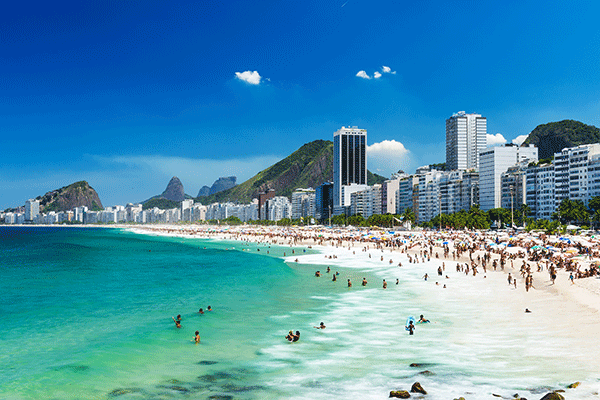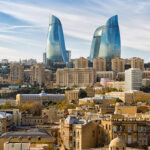In the Spring of 2010, a little jaded from a high-pressure Travel Sales job in Dublin, I decided to investigate the possibility of moving to Rio de Janeiro in Brazil,/>, as I had long been fascinated with Brazilian life and culture, especially the exotic music I had listened to for years. I had taken up Latin Percussion and Drum-kit lessons in Dublin and thought maybe I could one day apply them there….one day…!
With these lofty goals in mind, I set off to Rio for 2 weeks with some rudimentary Portuguese language skills and little planned other than a couple of Rio locals to host me – hopefully giving me a real feel for daily Rio life. Landing relatively late at night in Rio, I realised I had been too relaxed about organising money on arrival. I found the exchange desks closed and none of my cards working in the airport ATMs. After financially motivated assistance from a taxi driver and a security guard (who happily accepted half the money the taxi driver insisted I pay him), I coaxed a few Reais out of the blasted machines. I rode with the taxi driver to Copacabana to meet my first host and his friends, and we went out for some birthday drinks. Over the next few days, I stayed far outside the familiar tourist areas of Copacabana, Ipanema, Lapa, and Santa Teresa with my host Marcelo, forcing me to use the exceptionally confusing subway system, which had diversions everywhere due to maintenance works. I couldn’t figure out the pattern, and it was sheer luck that I managed to get anywhere I intended to go when I travelled solo. My host for those first few days, Marcelo and his neighbour Hugo (who spoke much better English), were incredibly kind hosts. As Marcelo was a Musician, I was treated one evening to a lesson in Brazilian music history and a few original songs by him and his girlfriend in their front room, which was an utter privilege. Still, I did feel like I wanted to experience somewhere a bit closer to the areas I had heard so much about, so I brought forward my second local stay and went to stay in Copacabana with a young lady called Gabriela. She took me out straight away for passion fruit Caipirinhas – surprisingly bitter! – and introduced me to Ivo, her Portuguese friend who was there to do restoration work at the Portuguese Embassy. With his excellent English and lust for life, we became fast drinking buddies, and I finally learned where to get a reasonably priced drink in Rio – the botecos of Botafogo! In these small informal bars, you would sit on patio furniture on the pavement, pour large cooled bottles of beer into small glasses and enjoy the chat and warm air. Bliss. Copacabana is essentially the backpacker’s version of Ipanema. A noticeable sheen of wealth in Ipanema is not present in Copacabana. However, both share the same wonderfully long stretch of beach – you could walk it for hours admiring the impossibly beautiful bodies and hills surrounding Rio, making for a gorgeous landscape both near and far. I was fortunate to be in Rio during the World Cup, which meant everyone was 100% focused on the progress of the yellow shirts. As one of Gabriela’s friends, I joined her on a match day in another friend’s house high in the hills overlooking most of the city, and let me tell you, the view from their large outdoor terrace with a homemade Caiprinha in hand was something I will not soon forget. As the match of the day played out, I remember looking over vast stretches of the city and slums and could see almost nothing move or make a sound – a seemingly dead landscape. And then, when Brazil put the ball in the back of the net, the whole city came to life in a roar of cheers and vuvuzelas. Other highlights were an indoor Samba concert (I wish I could remember the venue name), which was mesmeric, a hike up the Sugarloaf to some of the most gorgeous views of a cityscape I have witnessed, and a few nights spent on the nearby Ihla Grande – a tropical resort island a couple of hours outside Rio where I got some proper hammock time in. Santa Teresa in the hills of Rio is an unmissable and unspeakably gorgeous, well-preserved part of the city. However, there are not as many places to stay here as the prices are relatively high, and it is more residential. The rickety old tram that takes you up there is an enjoyable experience! The Lapa area is a central nightlife hub, and though I experienced no trouble while I was in Rio, it is somewhere you want to use extra caution at night. This is easily one of the funniest places to go out in Rio! I also visited the largest favela in Rio – Rohinca – as part of my exploration into a job. I have seen some pretty eye-opening stuff on my travels, and the sheer number of people packed into such a tight space made the apparent sense of community all the more remarkable. I was offered a job teaching English on the spot but had to explain I was on more of a fact-finding mission! I never got to the Christ the Redeemer statue, which is a tourist sin, with it being such an iconic sight in Rio!
A little Brazilian Portuguese will go a long way in Rio, as many people speak very little English. It will also help avoid situations where Brazilian friends offer you a phrase to say to a waiter, with the waiter then asking you back in English if you are sure you would like ‘a little kiss’ for your main course. Temperatures are relatively high year-round but can be pretty sweltering and humid in their summertime (our wintertime), making the May – September period the best time to go, unless you are looking to visit during Carnival in February/March time, of course. Prices and visitor numbers soar around Carnival – you have been warned! Remember that Rio will probably be the most expensive place you visit in South America, but it’s well worth it to soak up a slice of this intoxicating city.
Spread the love



